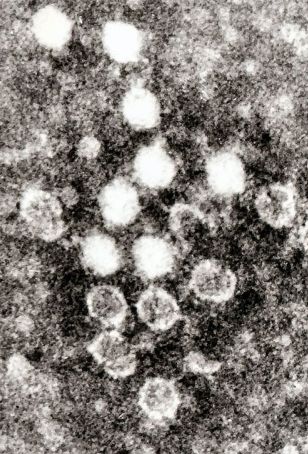Difference between revisions of "Category:Parvoviridae"
Jump to navigation
Jump to search
| (5 intermediate revisions by 2 users not shown) | |||
| Line 6: | Line 6: | ||
<categorytree mode=pages>Parvoviridae</categorytree> | <categorytree mode=pages>Parvoviridae</categorytree> | ||
| − | |logo = | + | |logo =Parvovirus logo.jpg |
}} | }} | ||
| Line 16: | Line 16: | ||
*Infect rapidly dividing cells | *Infect rapidly dividing cells | ||
*Target bone marrow, intestinal epithelium, and growing fetus (via viremia) | *Target bone marrow, intestinal epithelium, and growing fetus (via viremia) | ||
| − | *Causes [[ | + | *Causes [[Parvovirus Enteritis|Parvovirus Enteritis]] |
=Epidemiology= | =Epidemiology= | ||
*Can persist for years in the environment | *Can persist for years in the environment | ||
| + | {{Learning |Vetstream = <p>[https://www.vetstream.com/canis/Content/Bug/bug00213.asp Canine Parvovirus]</p><p>[https://www.vetstream.com/felis/Content/Bug/bug60013.asp Feline Panleukopenia]</p>}} | ||
| − | [[Category:Viruses]] | + | [[Category:Viral Organisms]] |
| + | [[Category:To_Do_-_Clinical/Viruses]] | ||
Latest revision as of 00:02, 16 June 2016
Parvoviridae
Parvoviruses are cleverly named for their extreme size (parve=small). They are species-specific and serious gastroenteric infections.
Morphology
- Small, non-enveloped, icosahedral DNA virus with featureless virions
Virulence and Pathogenesis
- Resistant to pH (even gastric acidity), heat, and desiccation
- Infect rapidly dividing cells
- Target bone marrow, intestinal epithelium, and growing fetus (via viremia)
- Causes Parvovirus Enteritis
Epidemiology
- Can persist for years in the environment
| Parvoviridae Learning Resources | |
|---|---|
To reach the Vetstream content, please select |
Canis, Felis, Lapis or Equis |
Pages in category "Parvoviridae"
The following 5 pages are in this category, out of 5 total.
